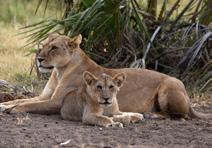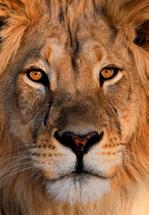SPRING 2023
ALL THE LATEST ON YOUR ADOPTED ANIMAL



ALL THE LATEST ON YOUR ADOPTED ANIMAL





Want to do even more to help animals? You can go green and get this magazine by email. A digital mag = no print, no post, low carbon footprint and max support for your adopted animal! To go digital just email us at info@bornfree.org.uk or call 01403 240170.
Gopal the Tiger
The Rhino Family
Sara the Chimpanzee
The Gorilla Family
The Pangolin Family
The Cheetah Family
King the Lion
Parly the Moon Bear

The Giraffe Family
Springer the Orca
Timtom the Orangutan

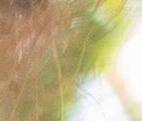

The Ethiopian Wolf Family

Elsa’s Pride
The Leopard Family
The Elephant Family
Kyriakos the Brown Bear













The Brown Bear Orphans
Chinoise the Chimpanzee
The Jaguar Family
Meet our Team
I hope you enjoy your new look My Adopt magazine. Created exclusively for adopters like you, it’s packed with fascinating news about your animal, plus a gorgeous new photo!
As an adopter, you’re an important part of the global Born Free family of people who care passionately about wildlife. Whether you look after a rescued individual in a sanctuary, or support the conservation of a rare species in the wild, your adoption makes it possible for us to protect and look after your animal. Thank you!
 Will Travers OBE Executive President
Will Travers OBE Executive President

@bornfreefoundation bornfreefoundation @bornfreefdn
Thanks to people like you, our charity is devoted to wild animal care and conservation. Together, we make the world a kinder, better place. Like to get even more involved in our Born Free family? Visit bornfree.org.uk and join us on social media:
bornfreefoundation bornfreefdn
bornfreefoundation bornfreefoundation
bornfreefoundation
None of our rescued animals in permanent care are allowed to breed; we vasectomise males or spay/give hormone implants to females. We do not want to add to captive populations, plus sanctuary space is in short supply, so we keep these precious spaces for animals most needing rescue.


Home today: Lifetime care in a spacious forest enclosure
Background: Born in the wild but captured when he came into conflict with people by preying on cattle and goats
Arrived at sanctuary: 2014
Age today: 14
TODAY, AS FEW AS 4,500 TIGERS REMAIN, A 95% DECLINE SINCE 1923. BUT, INDIA IS HOME TO NEARLY 3,000 TIGERS, MORE THAN DOUBLE THE NUMBER RECORDED WHEN OUR CONSERVATION WORK BEGAN THERE IN 2004.
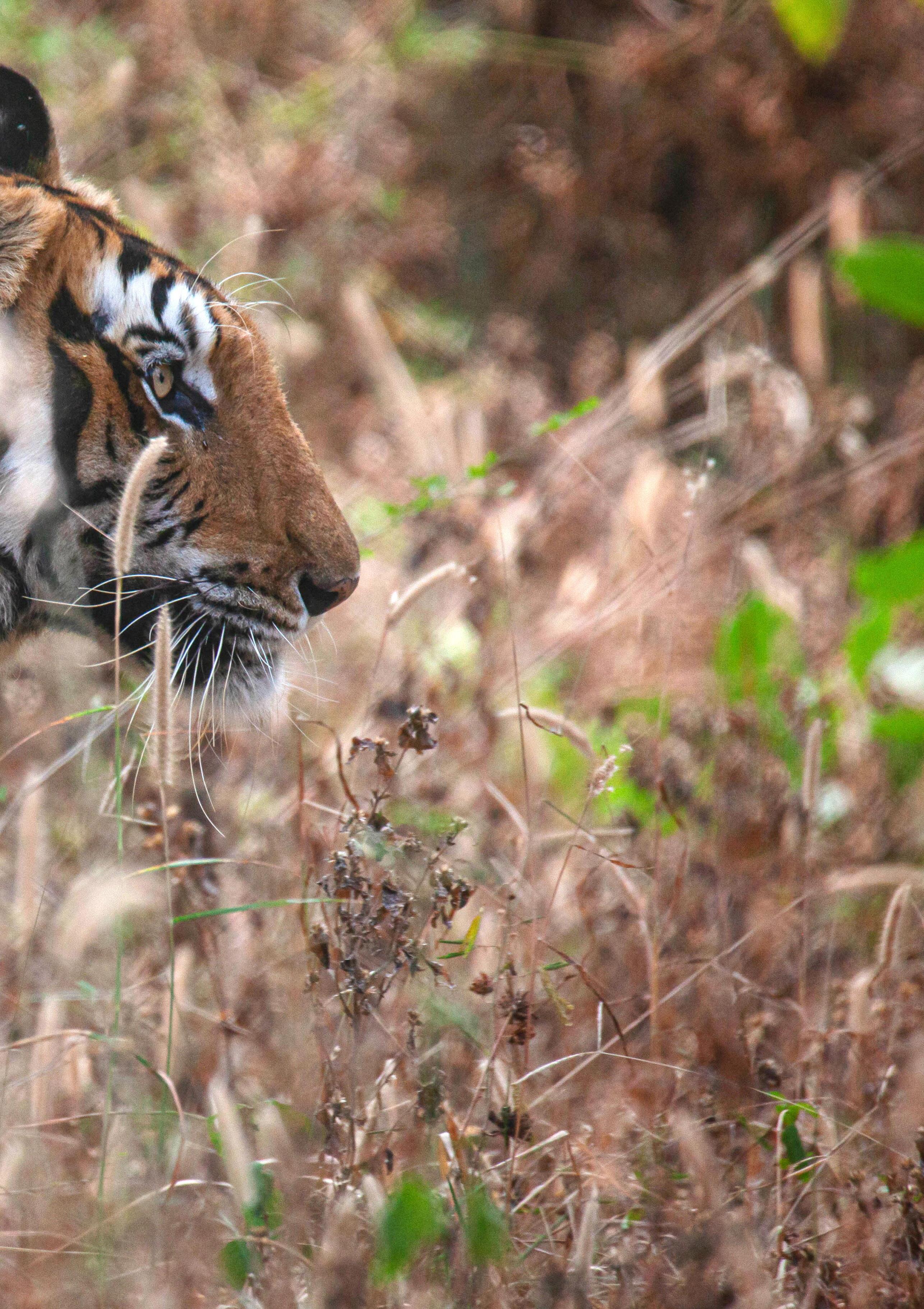
Tigers belong in the wild, yet for our beloved Gopal, his time in the jungle was tragically cut short. Funded by adopters, Gopal was rehabilitated by Wildlife SOS in as natural a habitat as possible. He surveys the lush greenery and majestic mountains surrounding the sanctuary, while his enclosure is full of indigenous trees and plants.
Gopal spends his days like most older cats – keeping clean and lounging around. Grooming is an important part of any big cat’s day! Their barbed tongues help clean their coat and remove dirt. But, tigers have a sharp sense of hearing, and during a relaxing groom or even a nap, Gopal immediately tenses his muscles if he hears so much as a twig break nearby.
To ensure he receives mental and physical stimulation, his caregivers constantly create new enrichment for him – he receives some every single day. It seems Gopal’s favourite is to find hidden treats using his sense of smell.
A while ago he underwent treatment from our vet team including laser therapy for an abscess on his hind limb, which has significantly improved. He undergoes regular health checks and is provided with a nutritious diet including supplements. Thank you for all your help towards this expert care.
Sandhi Priya Deputy Director, Corporate & Philanthropic Partnership Wildlife SOSSince your last update, with your support and under our watchful eye, Sara has remained in good health. As you might know, chimpanzee society is hierarchical and Sara already ranked well in the group. But, in recent months her social status has greatly risen, putting her in very good standing in her community.
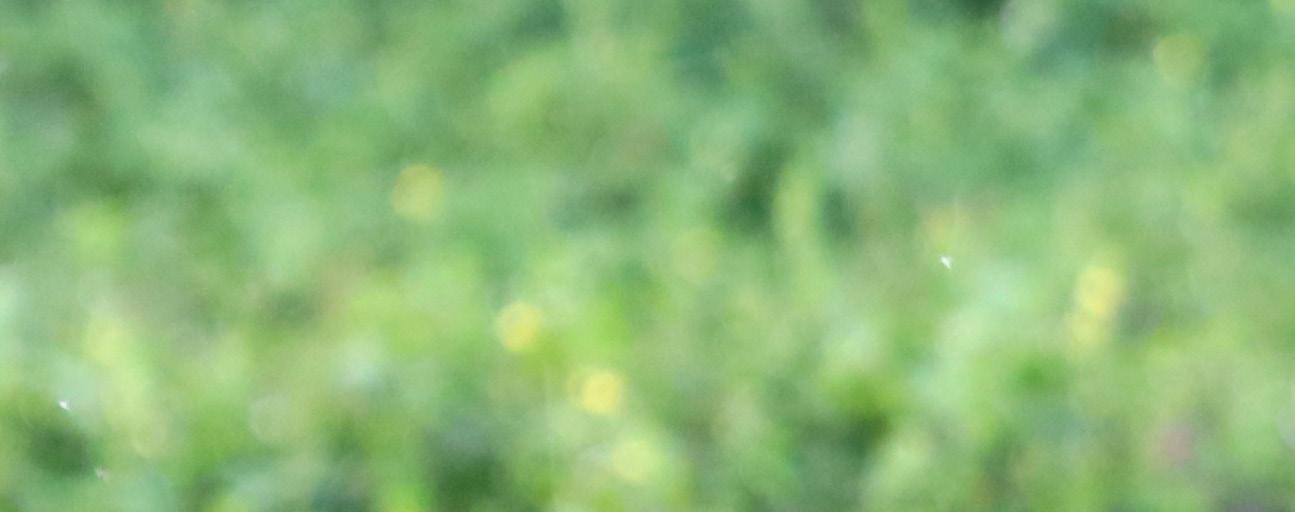

Sara enjoys playing with the young chimps in the group but, can be a little rough at times. Thankfully, she has stopped her habit of using a stick to assert her dominance! We are happy to see she has a good appetite, using her position in the group to be amongst the first to choose her favourite titbits, eating any food straight away rather than saving for later. She and another chimp, Kyewunyo, had been arguing over food, but now just try to avoid each other at mealtimes!
Adventurous Sara likes to sleep in the forest overnight, rather than in the chimp housing and is one of the last individuals to return for food in the mornings. But, one evening recently, she surprised her caregivers by being one of the first chimps to return. The sky was cloudier and darker than usual and the night quickly turned very cold indeed. How interesting Sara could tell bad weather was on its way and chose to spend the night safe inside. We can learn a lot from this amazing chimpanzee!
Innocent Ampeire Assistant Sanctuary Manager, Chimpanzee Trust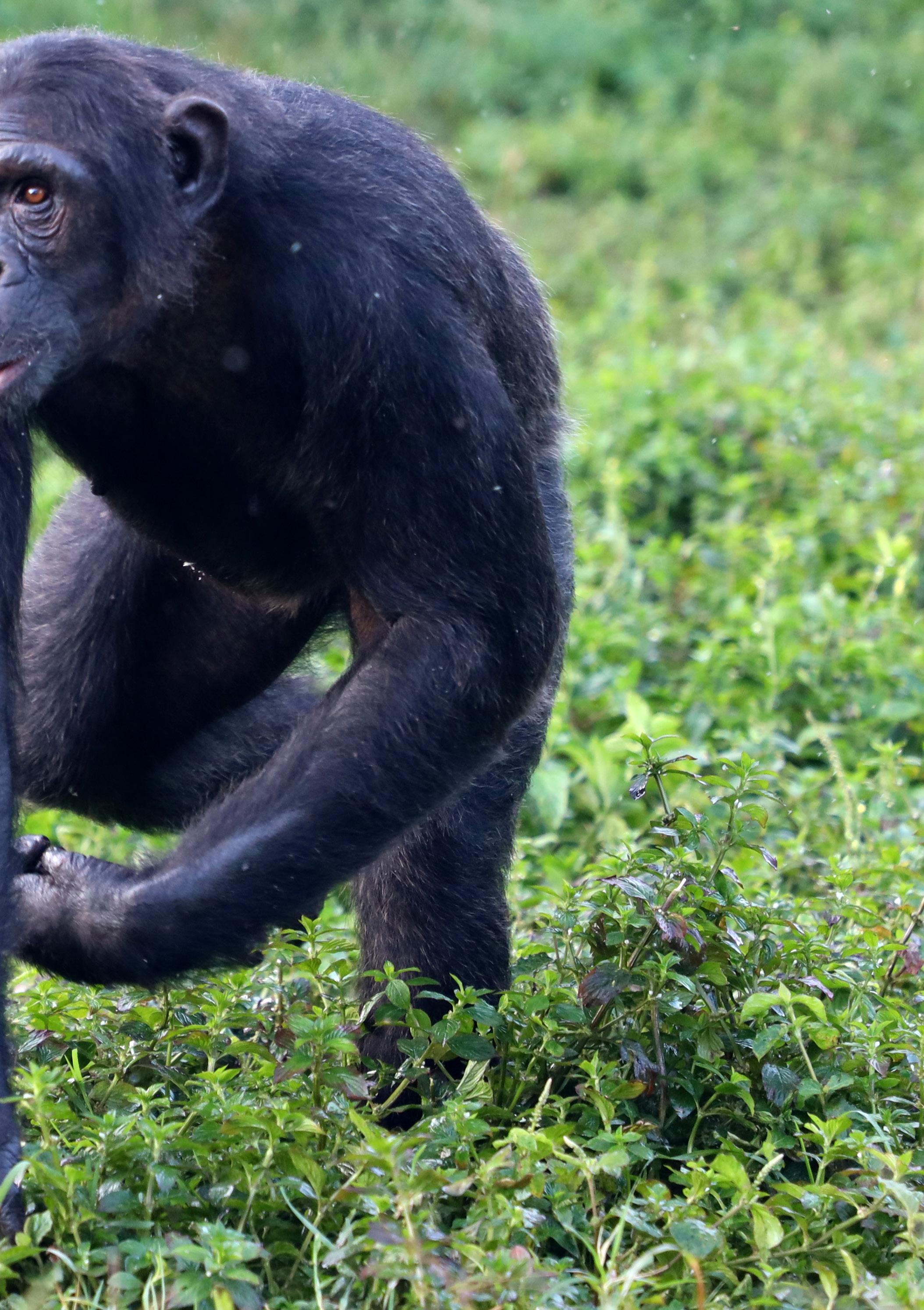
Home today: Lifetime care with 51 other rescued chimps amidst 100 acres of rainforest in this island sanctuary in Lake Victoria
Background: Sara was rescued in South Sudan and was due to be sold as a pet
Rescued: 2012 aged four years
Age today: 15 years
Surrounded by the peaceful waters of Lake Victoria, the sanctuary on Ngamba Island was established in 1998 by Born Free, together with chimp expert Dr Jane Goodall and five other wildlife groups. Today, it has become one of the world’s leading primate sanctuaries and is also devoted to wild chimp conservation and community education.


Home today: The tropical forests of southwest Central African Republic, close to the Sangha river
Background: Orphaned and injured pangolins are rescued and treated within a small hospital funded by Born Free
Rescued: Since 2013, more than 100 pangolins have been cared for and released, monitored by local Ba’aka tribespeople. Sangha Pangolin Project is also devoted to education and conservation
Unchanged for 70 million years, pangolins are the only mammal with scales, erroneously believed by some to have medicinal properties. The most illegally traded mammal on the planet, today all eight species are threatened with extinction and Born Free is working hard to secure their future.
A few months ago, you helped us rescue a baby white-bellied pangolin, nicknamed ‘Epika’ by his carers. Thanks to a Born Free poll, he is now called ‘Nguindolo’, which means ‘king of the forest spirit’ in the native Ba’aka language.
Thanks to your funding, a young veterinarian with experience of wildlife rehabilitation in South Africa and Botswana, came to care for him. ‘Pangopups’ are very hard to rear but, Anthony was totally dedicated, pulling Nguindolo through some worrying episodes when he became ill.
In the wild, a youngster stays by his mother’s side while she forages at night, learning which ants or termites to eat and how to feed. With us humans, Nguindolo just had his instinct to rely on and without his mother this was a difficult process. But, within a few months, he weaned from milk feeds to termites and ants.
His natural rhythm of night feeds was soon apparent. We took him walking in the forest to dead logs or trees, helping him open branches to get to termites. He got into a routine feeding from 8pm11pm, then again before dawn. Nguindolo now wanders independently in the forest guarded by his Ba’aka carers, returning to his wooden box to sleep. But, he still insists on drinking water from a bottle!
Tamar Cassidy Co-Founder & Head of Animal Care Sangha Pangolin ProjectWith your support, King is lovely as always –calm and relaxed. It’s been summer in South Africa and your lion moved as little as possible during the scorching days, here at Shamwari. He likes to stay at the top of his enclosure, where it is more shaded by trees.

However, in the cooler early mornings and late afternoons, without fail, you can see King asleep on his platform. When I look out of our centre window in the morning, he is usually the first thing that I see!
Big and playful, King loves to play fight with Thea. They wrestle then give chase, but he also interacts with our other rescued cats in nearby enclosures by roaring. He has such a deep voice that echoes through the mountains.
King seems to love food! When he smells his meal, he switches from calm to feisty, like he has smelled wild prey. After eating, he takes a nap, often on his platform which gives him a much better view of his surroundings.
Recently, our vet came to check our cats, and remarked that ‘King is a strong and healthy lion’, which is brilliant news. Thank you for helping care for this wonderful big cat!
Martin Miritiawo Animal Care SupervisorHome today: Lifetime care in a spacious enclosure with companion Thea
Background: Rescued from illegal pet trade in France, 2017 Arrived at Shamwari: July 2018
Age today: Five years
SINCE WE BEGAN, BORN FREE HAS RESCUED 56 LIONS FROM LIVES OF SUFFERING IN ZOOS, CIRCUSES AND THE PET TRADE.
WE CURRENTLY PROVIDE LOVING, EXPERT CARE FOR LIFE FOR 27 LIONS, COSTING £202,397 EVERY YEAR.
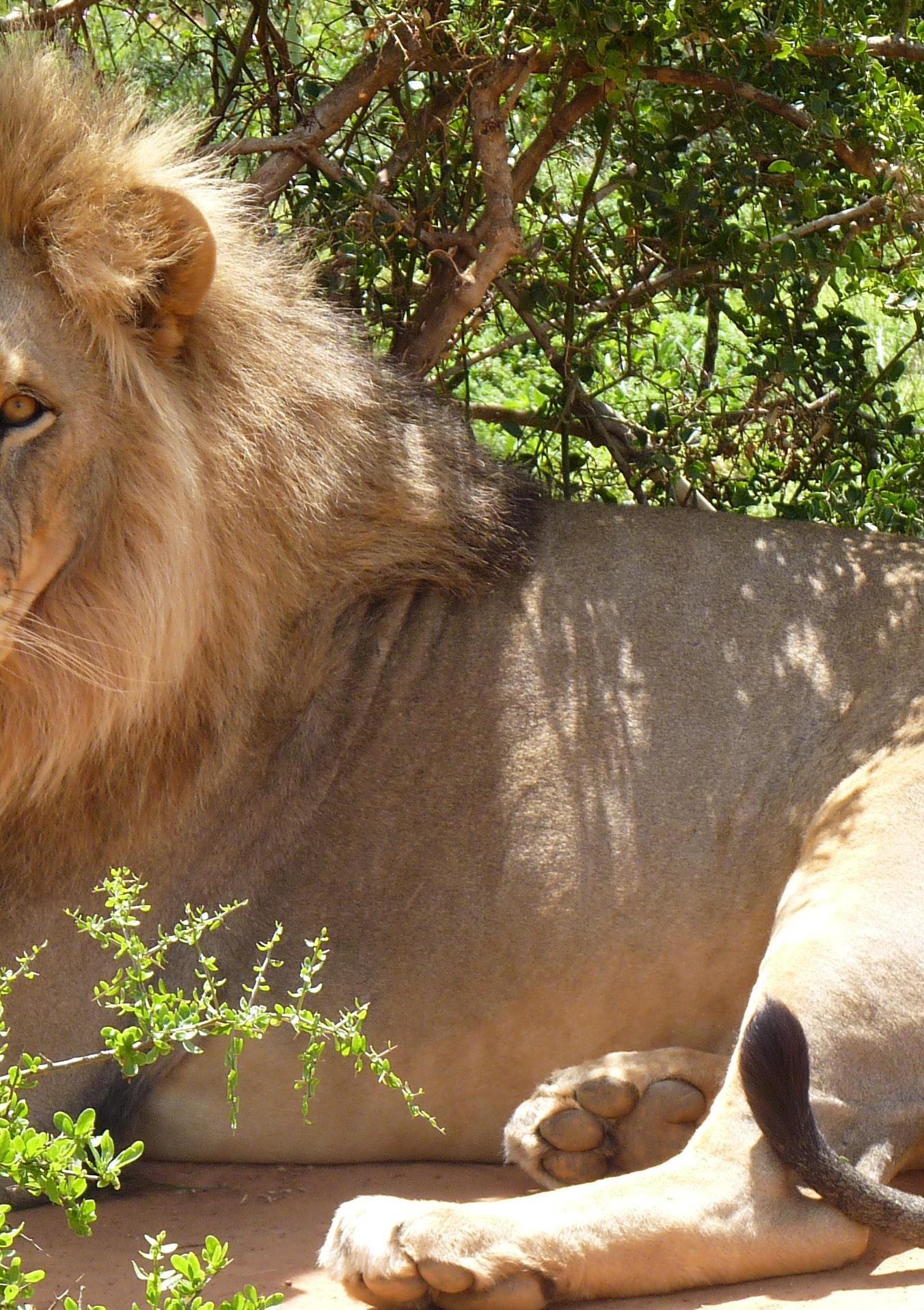
Home: Kenya is a vital home for rare, reticulated giraffes and Born Free is in action to save them

Family: Around 1,400 live in Meru
Background: Just 16,000 wild reticulated giraffe remain, a 56% decline in 30 years
AFRICA OFFICIALLY* HAS ONE SPECIES OF GIRAFFE AND NINE SUBSPECIES, WITH THREE FOUND IN KENYA. THERE ARE LESS THAN 100,000 WILD GIRAFFES IN TOTAL TODAY, ALMOST A 30% DECLINE IN 40 YEARS.
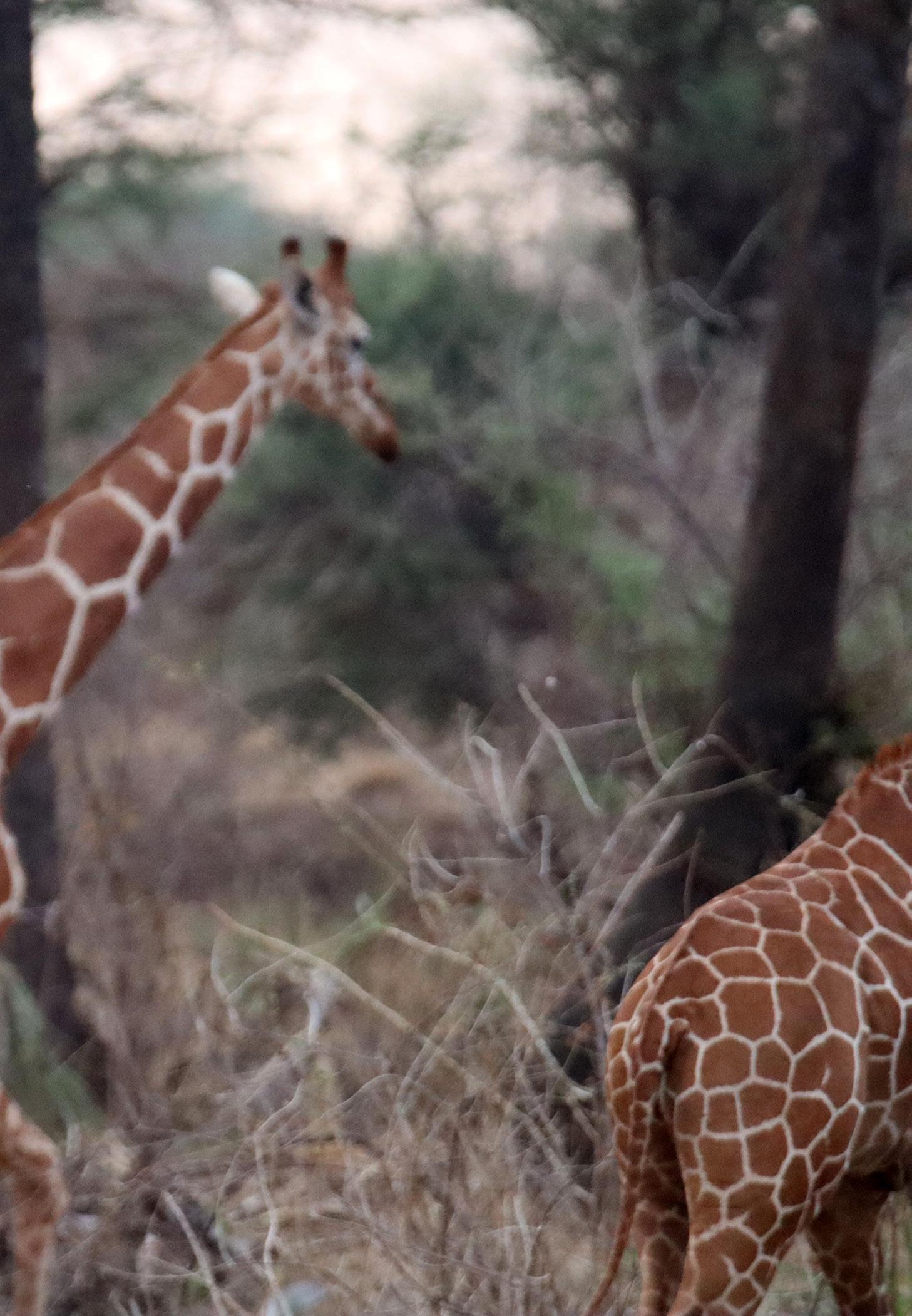
With your support, our team is working hard to monitor and protect Meru’s giraffes, with 218 now identified and catalogued. Our database provides crucial information on population ‘demographics’, invaluable for conservation. Last year, we were thrilled to report our first-ever giraffe twins. Only a handful of giraffe twins have been documented worldwide, so we are delighted mum ‘Zarafa’ and her calves are doing well.
Our Twiga* Team is busy collecting and destroying snares – a significant threat to wildlife in Meru, with long-limbed giraffe particularly vulnerable. We recorded 417 snares in one month alone – up to one every 0.6 miles. But, every snare we remove is one that can no longer injure wildlife.
While on patrol we frequently notice ‘necking’, in all-male herds. They hit each other using thick skulls and ossicones (horn-like bone structures) to sort out ‘hierarchies’. Once social rankings are established, bulls can avoid further confrontations over mating rights.
Much necking is low-grade, with bulls testing a rival’s strength by leaning and rubbing against one another. In more intense sparring, bulls brace their legs and bludgeon each other with wide-arcing sweeps – like boxers, they duck and parry to avoid direct hits. Fascinating! Thanks for helping keep giraffes safe.
Francis Kago Project Officer, Saving Meru’s Giants*Twiga means giraffe in Swahili

Home Today: Gradually preparing for life in the wild at Camp JL
Background: Taken from her wild mother as a baby and kept illegally as a pet
Rescued: January 2016, aged nine months
Age today: Seven years
Until 2017, there were only two known species of orangutan – the Bornean (like Timtom) and the Sumatran – when a third species was identified, the Tapanuli. With just 800 remaining, the Tapanuli is the world’s rarest ape.

Timtom took a significant step towards adulthood by spending her first night alone in the forest! It is important we slowly introduce the realities of life in the wild, including finding a safe spot to sleep. She was unsure at first but, after a spot of playing, climbed up into the trees and found a large branch to use as her bed. With more sleepovers in the rainforest and guidance from her playmates, we’re hopeful Timtom will show an interest in building nests – it would certainly make her night’s sleep more comfortable!
Adib, Boy, and Mona share Timtom’s home and each day the orphans are paired with one another to explore nearby trees. But, after frolicking together, Timtom often becomes disinterested and climbs down onto the forest floor. She seems as happy playing on her own as with others, not uncommon for a semisolitary species.
Within Lamandau Wildlife Reserve there are over 600 wild and reintroduced orangutans. Adopting Timtom not only helps her, but also the wider conservation of this Critically Endangered species, as we continue to protect this rich habitat from illegal encroachment and forest fires. Hopefully, Timtom will start her own family tree in the coming years, ensuring the protection of orangutans in Borneo for the future.
Ashley Leiman Director Orangutan Foundation25% KENYA
TODAY, JUST 20,000 WILD LIONS REMAIN, A 90% DECLINE SINCE ‘BORN FREE’ WAS FILMED 59 YEARS AGO.

BUT, IN KENYA LIONS ARE UP 25% TO OVER 2,500 SINCE 2010, WHEN OUR LION CONSERVATION WORK BEGAN THERE.

Home: Living wild in Meru, 220 miles northeast of Nairobi
Family: Six adult females, six sub-adults, plus cubs
Background: One of Meru’s oldest lion families, named after the lioness star of Born Free, returned to the wild by George and Joy Adamson in 1958


Wonderful news! Two of your adopted lions, Liz and Mururi Girl-2, have given birth – Liz has three new cubs and Girl-2 has two*. Both mums have strong defensive instincts. We watched Girl-2 chase off two intruding lions, to protect a buffalo kill for her growing cubs. She sustained an injury to her leg in the confrontation, but was treated by the vet team, and has now recovered well.
With your support, Born Free’s Pride of Meru team is starting to engage with local people, who live around Meru National Park. This is such important work. Lions are relatively safe in the protected area of Meru, but outside in the community lands there can be conflict. As you can imagine, lions preying on livestock can create tension and lead to retaliatory killings.
To help keep lions, people and livestock safe, we are trialling innovative ‘conflict mitigation tools’, such as deterrent lights, or even painting large eyes on cattle hind-quarters to prevent lion attacks (see pic below). You can find out more here: bornfree.org.uk/news/eye-cow-andpredator-deterrent-lights

With your help we want to create an environment where both people and lions can coexist peacefully. What an exciting area of development! Watch this space for further updates.
Alois Mweu Project Officer, Pride of Meru Born Free KenyaAMBOSELI NATIONAL PARK
KENYA
AMBOSELI NATIONAL PARK
KENYA
Home: Wild in Amboseli, a 150 square mile park at the foot of Mount Kilimanjaro
Family: Dozens of members including sub-group led by Edwina (born in 1982), granddaughter to Echo, the matriarch star of BBC’s Echo of the Elephants
Background: Amboseli is renowned for its 1,300 elephant population, studied by Amboseli Trust for Elephants since 1972.

Adopters help fund our new Saving Meru’s Giants (SMG) project, 300 miles north of Amboseli. Local Elephant Guardians help tackle conflict with people and we’ve so far identified 230 of some 1,000 elephants in the area, including older bull Kago – pictured here and named after Francis Kago, our SMG Officer.
Since our last update, Amboseli has been in the grip of a severe drought. There has been a sprinkle of rain, but unfortunately nowhere near enough. Many wild animals as well as livestock and elephants have unfortunately not been spared. We are collecting information, but we believe dozens have died.
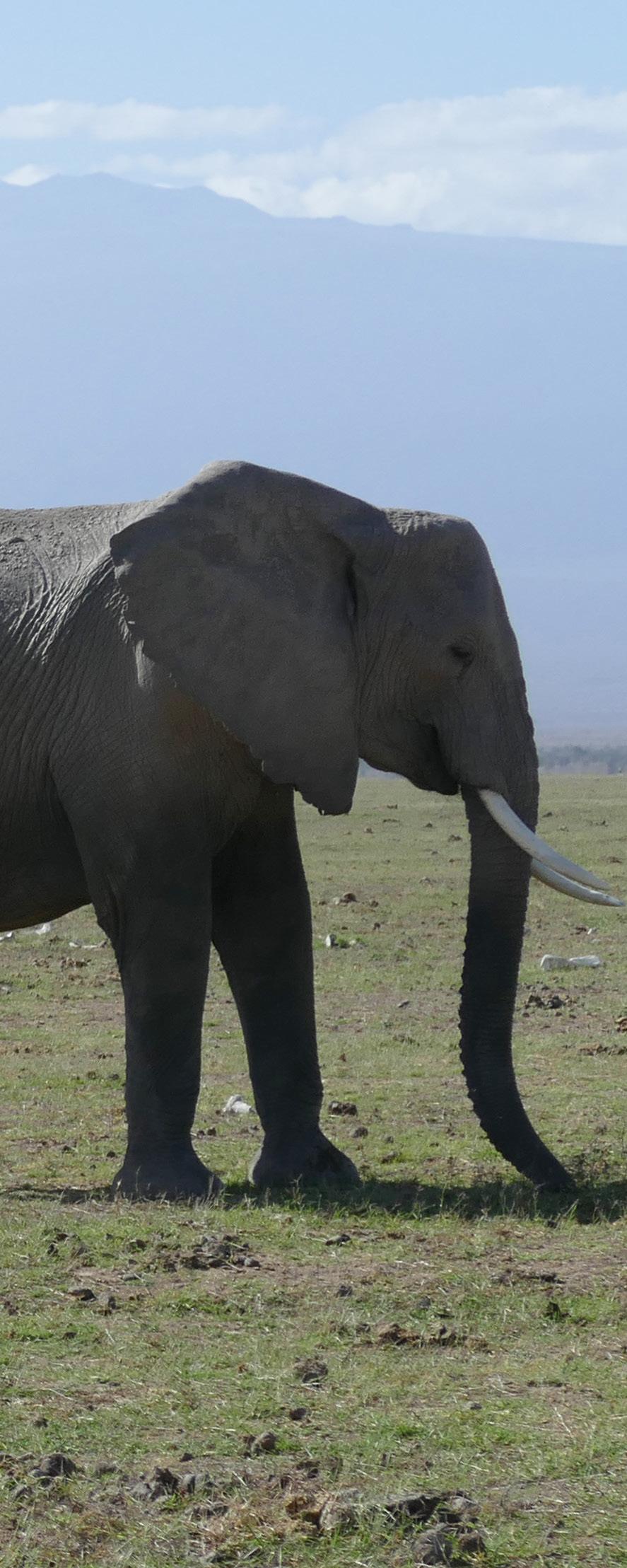
Thankfully, we can report that your precious adopted elephant Edwina is still alive, but her family has halved in size with just her daughters Elif, Elana, Elaine and Europa, and granddaughters Elegia and Elsinore left in the herd. We hope others are still alive and ranging independently, but we believe the youngest calves have unfortunately fallen victim to the drought.
Of course, one day it will rain again, and the ecosystem and elephants will recover. Unfortunately, it is always the youngest and oldest elephants most vulnerable to harsh conditions, and with climate change, droughts are becoming increasingly severe. We take heart from everything Born Free and our other partners in Amboseli are doing to help communities and wildlife through these tough times. Our conservation community has pulled together in an amazing way in these gruelling months, which has been a huge comfort.
Dr Vicki Fishlock Senior Scientist Amboseli Trust for Elephants
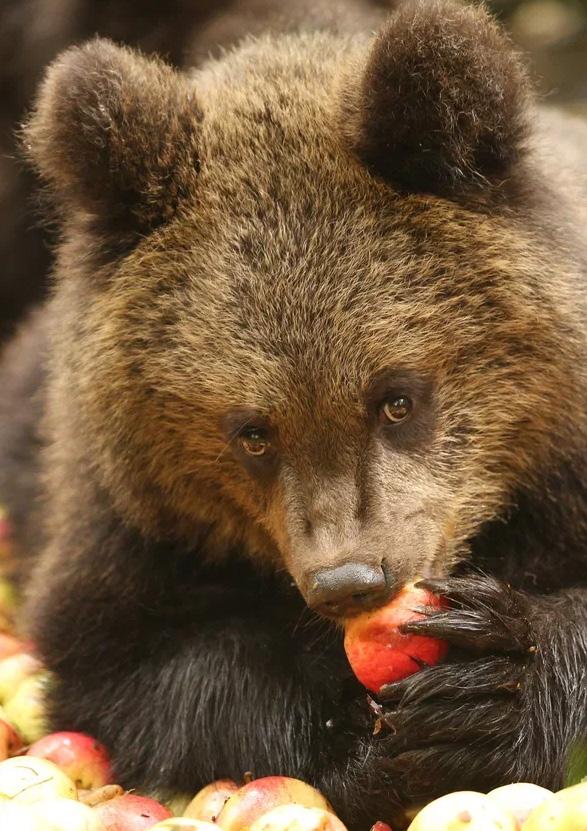
Home today: Rehabilitated at this rescue centre based in thick woodland, halfway between Moscow and St Petersburg and given a second chance of life in the wild
Background: Rescued, often as helpless newborns in critical condition, when separated from their mothers due to logging, human conflict and illegal hunting
Arrival at sanctuary: Usually from January until early summer each year
Age on arrival: From a few days to a few months old
With the help of adopters, rescued bear cubs undergo an incredible journey. At first these fragile orphans need round the clock care and regular milk bottle feeds. But, by three months, they can devour porridge and eggs for themselves and human contact is reduced. They move to a forest enclosure and begin to forage for berries and grasses, supplemented by fruit and veg. They enjoy roots and insect larvae, building up fat reserves ready to hibernate. By autumn, aged 10 months, they are ready for release.
We are happy to report that, with your wonderful support, all 14 of the bears rescued in 2022 have been successfully released! At the end of last summer, we began to fatten the orphans up in their forest enclosure, with plenty of fruit and acorns to help them prepare for their winter hibernation.
Of the orphans, 12 were then given a full examination by vets from Wild Nature Hospital, who assessed various parameters for each bear including heart rate, temperature, and the health of their teeth and ears. Two bears who had struggled more than the others in their early lives –Vesnushkin and Hedgehog – received their examinations a few weeks later.
Fortunately, all results showed the bears were in great condition, having learnt the skills needed to survive on their own. This was a miracle, especially for Vesnushkin as, only five months earlier, his prospects were not good. But, expert treatment, pairing him with another cub and their active play together helped him to recover. The bears were then ear-tagged and their releases took place over two months with the help of Regional Nature and Wildlife Conservation Specialists, who suggested suitable sites and carried out post-release monitoring.
STOP PRESS: Five new orphans have already been rescued this year. We will report back soon with details.
Katya Pazhetnova Wildlife Biologist & Centre Specialist Orphan Bear Rescue Centre
The 21 stone jaguar is the Americas largest cat. Often confused with leopards, jaguars have larger heads and jaws, sturdier bodies, shorter legs and dark rosettes. But rare melanistic jaguars and leopards are both known as black panthers!
Home: Wild in a band of forest along the eastern slope of the Andes Mountains, in north west Argentina
Family: There are thought to be no more than 250 adult jaguars in Argentina, with up to 150 living in the Yungas
Background: With Born Free’s help, Jaguars in the Fringe works to reduce threats, stop poaching and encourage expansion of the jaguars’ range

Meet Dozer, a young jaguar in the southern region of Calilegua National Park. His Spanish name is ‘Topadora’, translated as bulldozer! With your support, we are studying the jaguar population but, this male was not seen in our earlier surveys. However, last year, he was detected in multiple camera traps installed by park rangers, in collaboration with Jaguars in the Fringe.


Although Dozer is young and we do not know his ‘social standing’, his frequent walking across the landscape and overall good health suggests he has everything he needs to be dominant. Since Dozer lives close to the border of jaguars’ distribution, his presence is encouraging. Firstly, we hope he will produce healthy offspring, and his cubs will eventually leave and increase Argentina’s range of jaguars. Secondly, when ‘transient’ (on the move) jaguars arrive in the area they may move on due to his dominant presence – again expanding the species’ range.
How interesting a single individual can have such a significant impact, promoting the species’ expansion as they recolonise lost territories. This will only be possible if different groups collaborate, including governments, conservation organisations and the public, to raise environmental awareness and promote coexistence. Our team is grateful to adopters for your continued support in helping safeguard the elusive jaguar’s future.
Juan Reppucci Researcher, Jaguars in the FringeWITH THE HELP OF ADOPTERS, NO RHINOS WERE KILLED BY POACHERS IN KENYA, IN 2022. KENYA NOW HAS 1,739 BLACK AND WHITE RHINO, A 66% INCREASE SINCE 2014, THE YEAR BORN FREE BEGAN TO SUPPORT RHINO CONSERVATION THERE.
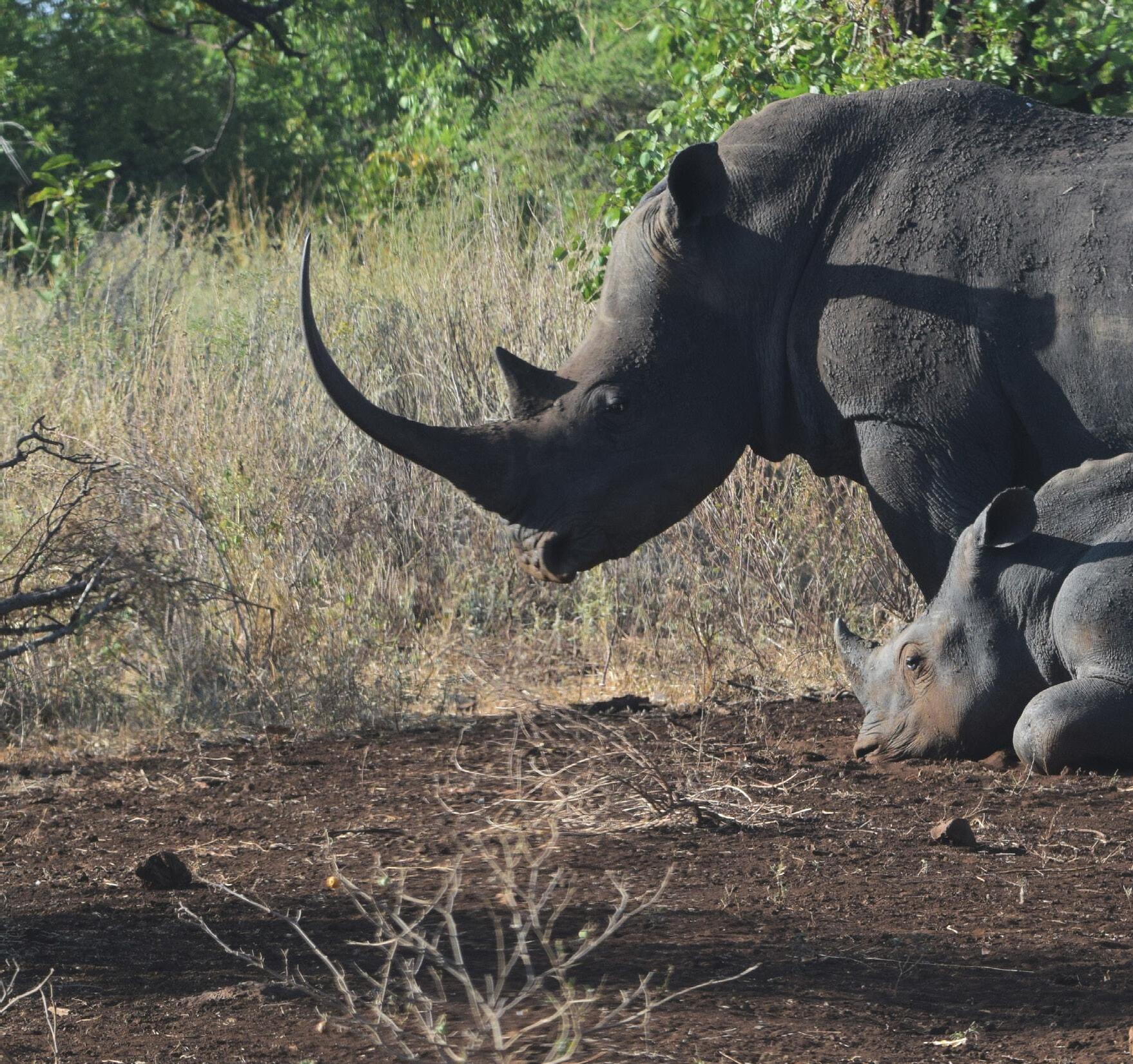
We would like to introduce Teso, a female white rhino born in Meru in 2012, easily identifiable by clear ear notches. Teso is renowned for having a larger home range than any other female in the sanctuary, ranging from eastern, central and Mururi swamp areas to the area around the rhino security headquarters.
Teso is busy taking care of her first-born, a female. Calves usually stay close to their mother until 18 months to two years old – when mum may give birth to her next calf. However, Teso is not yet ready to send her calf out into the world, despite other females who gave birth at the same time, now mothering their second baby.
Teso’s daughter was born in 2019 but Teso still keeps her close, devoting time and energy to feeding, protecting and teaching her how to fend for herself. She is such a loving and protective mother! But – good news – Teso is pregnant
Home: Rhino sanctuary within Meru

Family: A population of 91 white and 32 black rhinos, protected by rangers
Background: After a poaching epidemic in the 1980s, since 2014 Born Free has helped Kenya Wildlife Service restore Meru’s wildlife, including rhino, to its former abundance
again and expecting her second calf soon. We eagerly await her reaction, will she encourage her older calf to become independent to make way for the new arrival?
Thank you for your generous support. It is a huge motivation for the Rhino Rangers, who work tirelessly to ensure the survival of this iconic species for future generations.
Newton Simiyu Manager, Saving Meru’s Giants Born Free KenyaWith the help of adopters, the team in Kahuzi-Biega is monitoring 13 family groups of eastern lowland gorilla. Also known as Grauer’s gorilla, this Critically Endangered subspecies of eastern gorilla is found exclusively in a few mountain forest regions in DRC.


One of these groups, the Bonane family – led by Chimanuka’s eldest son – has welcomed a new member with the birth of a new baby last November. This is the second baby for mother Siri, who previously gave birth to Deschryver (named after Belgian conservationist Adrien Deschryver, who established the park in 1970).
This was the second birth recorded in 2022 as the Mpungwe family also welcomed a new baby, taking our total of monitored gorillas to 173 within eight family groups. Our team is still keeping an eye out for the silverback Chimanuka, who remains unsighted as yet.
With your help we can learn about each family’s composition, check on their health, distribution and behaviour, and gradually habituate the gorillas to our presence. This is vital, for example, if we detect any health issues a specialist vet from our park partner Gorilla Doctors can intervene. With your support, our team is working tirelessly to prevent the extinction of these charismatic and intelligent gorillas.
Sarah Brook Programme Manager Kahuzi-Biega National ParkHome: Living wild in the mountain rainforests of a vast 2,300mi2 park in eastern Democratic Republic of Congo (DRC)
Family: Large families of females and offspring, defended by mighty silverback males

Background: Since 2000 Born Free has supported a team of rangers who risk their lives to keep these gorillas safe from poachers
THERE ARE TWO SPECIES EACH WITH TWO SUB-SPECIES:
EASTERN:
• EASTERN LOWLAND UP TO 6,800*
• MOUNTAIN MORE THAN 1,000
WESTERN:
• CROSS RIVER LESS THAN 300
• WESTERN LOWLAND UP TO 100,000 *According
Home today: Spacious natural enclosures with undergrowth to explore and room to run
Background: Victims of the illegal pet trade and were stolen from the wild as cubs

Arrived at Ensessa Kotteh: 2011 to 2022
Age today: Two to twelve years
Your Cheetahs:
Girls Rescued
Sisay (aka Jijiga) Dec 21
Konjo (aka Tamu) Apr 15
Choa (aka Nura) Apr 15
Boys Rescued
Hailu June 16
Timkat Jan 11
Barega (aka Coro) Mar 20
Dehar Jan 22
Dima June 22
It is well over a year since our new cheetahs Dehar and Sisay arrived at our centre. You may remember Dehar had a bad leg and foot when rescued. He has finally been able to go outside for supervised exercise, and a recent x-ray revealed significant improvement. We will continue to ensure he remains comfortable.
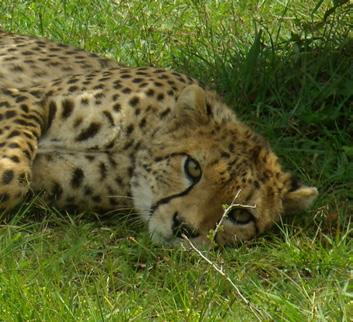
Sisay isn’t very trusting of people since her bad start to life but, we hope she will continue to relax as time goes on. After what she experienced, it is no surprise she can struggle to settle at times. Meanwhile Dima, rescued last June, is enjoying life and we hope will soon be introduced to the wider family.
We were sad to lose two cheetahs to illness in recent months. The other members of our family seem to be coping with the loss, nonetheless we are doing all we can to monitor them closely. As part of their daily enrichment, to keep them active, they enjoy clawing at hessian sheets, covered with incense and hung from trees.
Bereket Girma Head of CentreSINCE WE BEGAN, BORN FREE HAS RESCUED 22 CHEETAHS, MOST FROM THE WILD PET TRADE. WE CURRENTLY CARE FOR EIGHT, COSTING £10,000 EACH, SO A TOTAL OF £80,000 EACH YEAR. OUR WORK CONTINUES TO END THE CRUEL TRADE.

We were devastated to lose two siblings in recent months, first Lakota and then her brother Dember, both after short illnesses. Many of our beloved cheetah have underlying health issues due to ill treatment before rescue, with compromised immune systems making them vulnerable. Nonetheless, the pair enjoyed more than 10 years of enriched care, safe at our centre. Rest in peace, dear ones.

Visit bornfree.org.uk/adoption-diary for extra updates
AMBOSELI NATIONAL PARK KENYA
ANIMALS ASIA’S BEAR RESCUE CENTRE TAM DAO, VIETNAM
Home today: Lifetime care, with almost 150 rescued bears, in grassy, tree-filled enclosures with climbing frames, hammocks and bathing pools, plus sleeping dens

Background: Confiscated from an illegal wildlife trader in central Vietnam having, no doubt, been wild-caught to be sold to a cruel bear bile farm
Arrived at sanctuary: December 2012
Age today: 12
INTELLIGENT, INQUISITIVE AND OPPORTUNISTIC, THERE ARE EIGHT SPECIES IN THE URSIDAE FAMILY, VARYING IN SIZE FROM THE 25KG SUN BEAR AND 90KG MOON BEAR, UP TO THE 650KG POLAR BEAR. THERE ARE UP TO 61,000 MOON BEARS AND THE SPECIES IS OFFICIALLY ‘VULNERABLE TO EXTINCTION’.
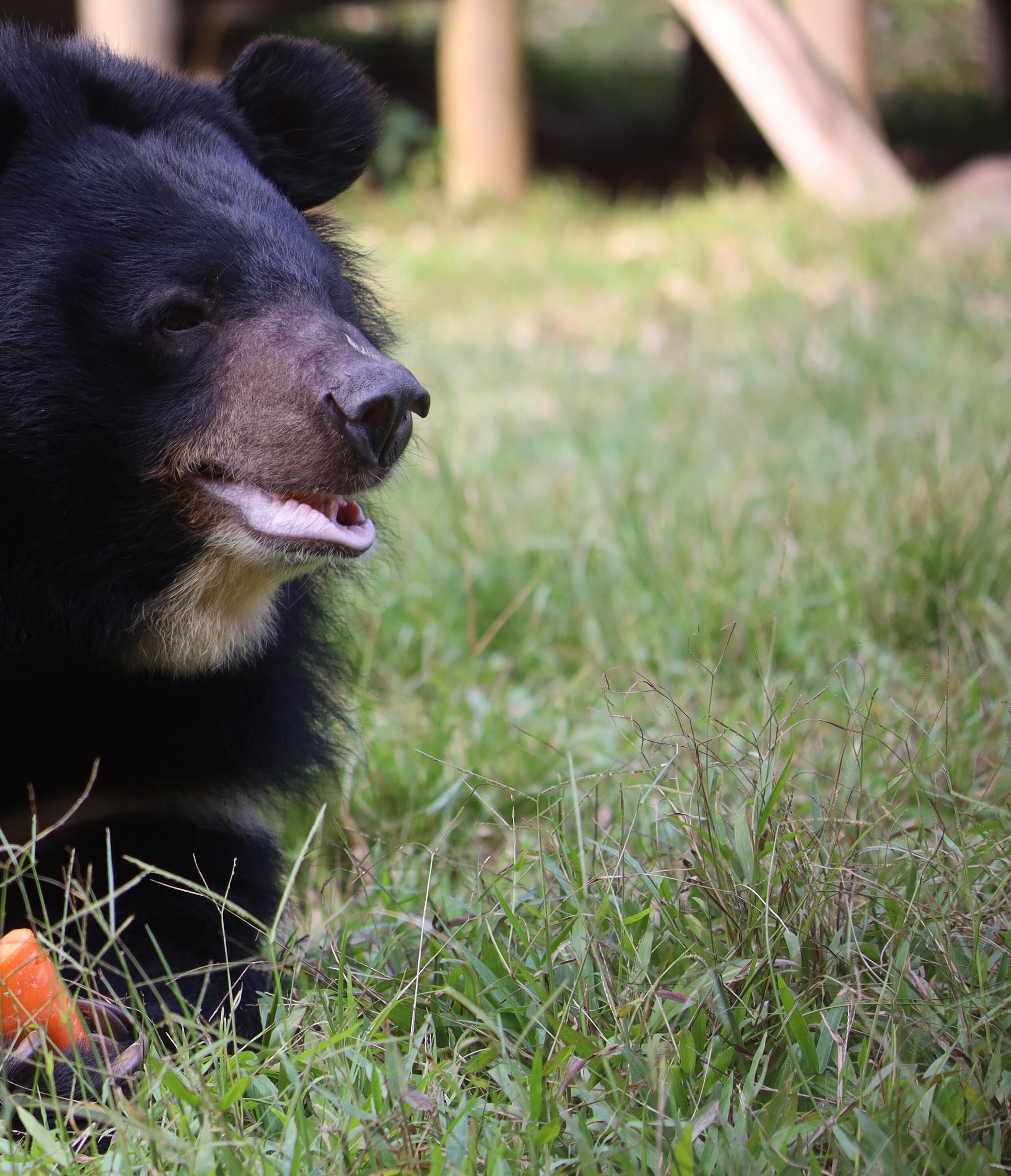
Parly is such a lovely, friendly boy who plays easily with the others. He forages well for the food we scatter in his enclosure – funded with your help and encouraging him to exercise and climb. From fruit and veg to nuts, seeds and oats, Parly is so fond of his food. He is one of our fastest bears, often rushing to get to his meal first – moon bears can run at up to 25mph!
Parly remains especially friendly with three other bears – Noel, Xanadu and Jeffrey – and, even though it has been winter, nothing stops him going outside to enjoy the food and toys in the enclosure. Although he is a gentle giant, he is also very persistent. Recently, he tried out his patented Parly play-style on another bear called Amara. She is generally a quiet bear not very interested in playing and was relaxing in the sun when Parly came and lay down on top of her! Surprisingly, his tactic worked and the two began to play wrestle.
We don’t know why or how it works, but every bear we introduce to Parly seems to have the same outcome –he engulfs them in a huge hug to get them to start playing. The term ‘bear hug’ was made for your Parly!
Laurel Hodgkinson Global Partnership Manager Animals AsiaHANSON ISLAND
JOHNSTONE STRAIT CANADA
Home: Living wild as part of British Columbia’s northern resident population monitored by OrcaLab which has studied orca since 1970 and has been supported by Born Free since 1994

Family: 21-year-old Springer gave birth to Spirit in 2013 and Storm in 2017
Background: In 2002, Springer’s mother Sutlej died and she became lost near Seattle, USA. Identified by her unique calls, she was taken 250 miles by boat back to her wild family, the A4 pod, near OrcaLab.

Despite being known as ‘killer whales’, orca are the largest species of dolphin. Sadly, at least 55 of these large, intelligent mammals are held captive including Corky, captured in 1969 aged four from her wild family, Canada’s A5 pod, and now living in a concrete tank in SeaWorld, San Diego, USA. None of her seven calves born in captivity have survived. Imagine how Corky and all captive orca must suffer! They belong in the wild with their families and Orcalab’s campaign to Free Corky continues.

Last year, we were delighted when Springer spent several days in the Johnstone Strait area. In this time she ushered her babies, Spirit and Storm, to and fro, and kept company with not only her A4 pod friends but also with her A5 and A1 cousins. On some days she and others were even joined by members of the ‘G clan’. It is fascinating to see that, despite significantly different acoustic traditions – unique repertoires of calls – the individuals from G clan have no trouble fitting in with their larger community.

Springer’s time in the area was quite lively as she spent many hours at the rubbing beaches, socialising and hunting. We were treated to full days and nights filled with exuberant orca sounds and, because of Springer’s own unique dialect, we enjoyed trying to follow her movements acoustically.
Springer has a long association with this area, which was inherited from generations before her, and which is probably why she is so compelled to make sure her babies learn about the place. Her babies are her contribution to the continued success of her community. She has the dual responsibility of keeping them safe and informing them well so that they will carry her unique legacy into the future. With your support, we are fortunate enough to watch this all unfold.
Helena Symonds and Dr Paul Spong Co-Directors, OrcaLabMOUNTAINS
ETHIOPIA
AMBOSELI NATIONAL PARK KENYA
Home: Living wild in the plateaux of the Afroalpine highlands, 3,500m above sea level
Family: Several close-knit packs, each led by an alpha male and female
Background: Slender, long-legged and red-tinged, closely related to grey wolves but, hunt alone, preying mainly on molerats and grass rats.

The world’s rarest canid and Africa’s most threatened carnivore, less than 500 Ethiopian wolves survive. Under threat from habitat loss and disease, every single new pup matters. Funded by adopters, Born Free helped establish the Ethiopian Wolf Conservation Programme with our Oxford University WildCRU colleagues in 1995. Like you, we are determined to ensure the safety of these beautiful, endangered wolves!
The wolves in the Web Valley tend to run like clockwork with family planning. Every August, for two weeks, they engage in energetic courting and mating, and 6062 days later dominant females pup in carefully prepared dens. All neighbouring packs give birth at the same time, suggesting a behavioural and physiological mechanism at play, synchronising breeding. Interestingly, wolves on Sanetti Plateau, only 25km (15.5 miles) away, come into heat and reproduce two months after those in Web.
But, probably due to last autumn’s unusually wet raining season, the pups didn’t show up before New Year, as expected. Dr Sandra Lai, who joined the programme recently, has been gearing to watch dens – deploying camera traps to capture in fine detail what it takes to successfully raise a litter. But they’ve kept her waiting…
Finally, nearly three months out of sync, the pups showed themselves on Sanetti, 4,100m above sea level and facing harsh dry season weather. Sunny warm days contrast with freezing nights, as low as -12°C. Sandra, Abdi and the monitoring team spotted activity around the BBC Pack den, but no sign of pretty, dark faces yet. Instead, they found three pups in Batu Pack and two in Garba Guracha Pack. Amazingly, Guracha’s dominant female – the leader of nine-ten adults – has been the breeder since 2014!
A total #GirlBoss Sandra says…
Professor Claudio Sillero Founder Ethiopian Wolf Conservation Programme
Like all big cats, leopards can roar but not purr. These fast felines run at up to 36mph and leap 6m.
Our beloved Sami is looking good for a 22-year-old! Found motherless with his siblings, we don’t know what their fate would have been if he hadn’t been taken in by soldiers. We are forever grateful to the Lundin family who funded the rescue, our vet Dr Johan Joubert who brought them back to Shamwari and to you, our adopters, for paying for their care. We miss Alam and Nimira, who died after many happy years, but Sami is content, currently spending most of his time in the cool shade – the days can get up to 35°C during South Africa’s summer.
The youngster Mowgli, on the other hand, remains elusive and only seen on our camera traps. We keep a careful eye out though and he clearly enjoys his food, and drinks well, so is fine – just shy. This is understandable as he had a bad start in life. Now he is never forced to show himself to humans, which is exactly how it should be.
Zeiss also keeps himself to himself, and we respect his privacy. He shows himself for a few moments on a grassy slope, then disappears again into dense undergrowth. We know he is fine though – he eats well and we are happy with him.

 Glen Vena Animal Care Manager
Glen Vena Animal Care Manager
Home Today: Lifetime care in their own spacious bush enclosures
Background: Sami rescued as a cub from the Sudanese desert in 2001, Mowgli and Zeiss from a South African zoo in 2020
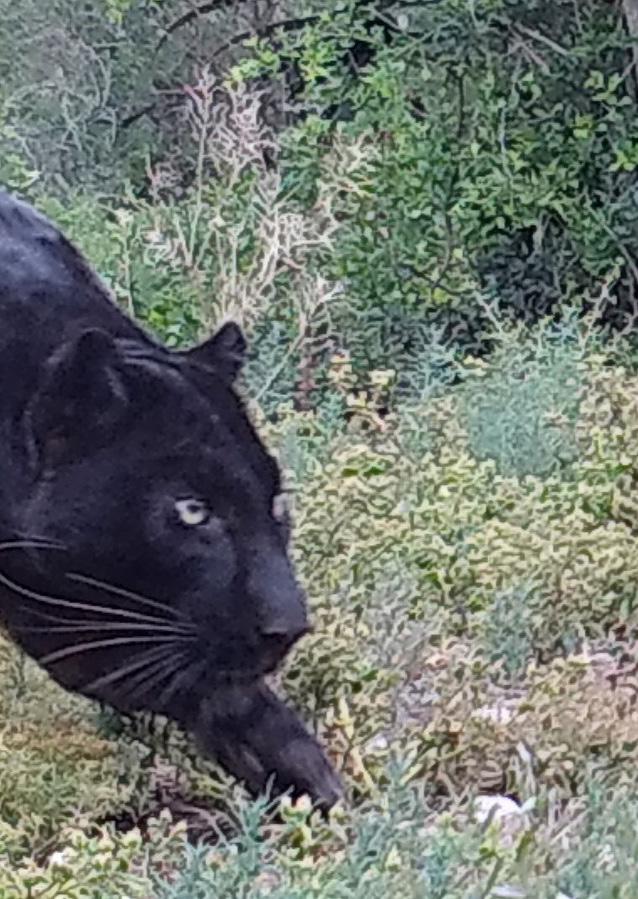
Age today: Sami is 22, Mowgli four and Zeiss nine
SINCE WE BEGAN, BORN FREE HAS RESCUED 12 LEOPARDS FOUND ORPHANED OR FROM DEPRIVED LIVES IN ZOOS.
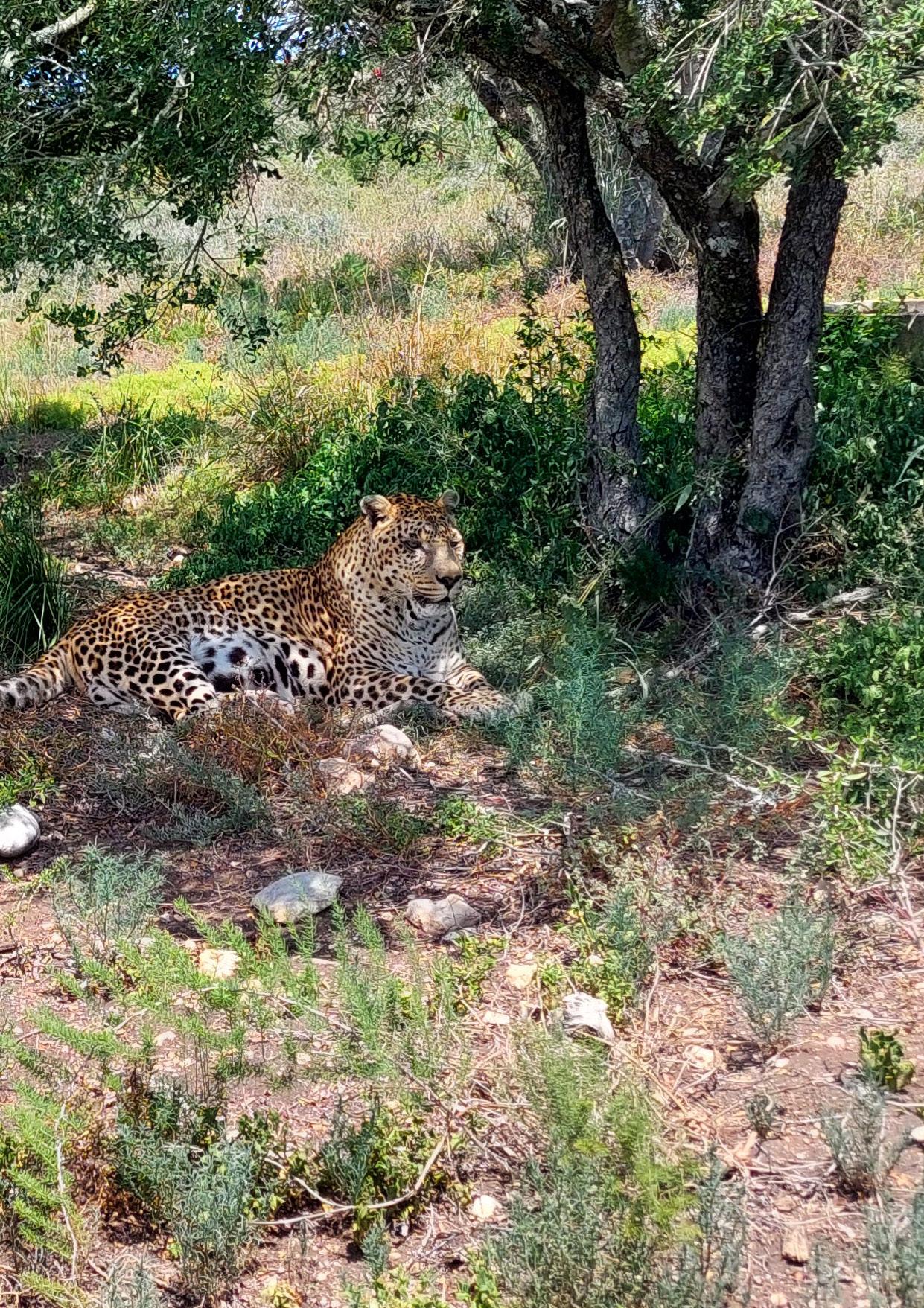
Many of the rescued bears at Arcturos are former dancing bears. Fortunately, this cruel and exploitative ‘entertainment’ is now at an end in Greece – the first country in Europe to ban wild animals in circuses. Supported by adopters, the sanctuary now also helps return rescued bear cubs to the wild whenever possible.

Weighing in at around 230kg, your magnificent Kyriakos is still the biggest bear we have at the sanctuary. He has remained busy over the winter months, rather than hibernating but, this wasn’t surprising. The weather here has been abnormally warm, with no snow or significantly low temperatures.
The relatively mild winter has had a big impact on our rescued animals. Although most of them haven’t been very lively in recent months – in order to conserve energy – they certainly haven’t been sleeping. Last autumn, Kyriakos had consumed large amounts of food in anticipation of the winter, with fish and eggs his favourite treat. He also spent time preparing bedding for his den with straw, leaves and branches and remained there on colder days.
Home: Lifetime care in a spacious beech forest enclosure
Background: Rescued from Kastoria in northern Greece as a four-month-old, wild-born cub, with his twin brother Manolis, when their mother was killed

Arrived at sanctuary: 2004
Age today: 19
But, with so many relatively warm and sunny days, he hasn’t slept and instead enjoyed wandering about, exploring the forest. He likes to play with big branches, splash around in his pool and dig big holes. Your bear remains one of the most active and playful animals in the sanctuary! With his thick, reddishbrown fur, he is a very impressive and beautiful bear.
Melina Avgerinou Animal rescue and care manager ArcturosHome Today: Lifetime care with a rescued chimp community in an expansive enclosure filled with climbing structures and stimulating enrichment
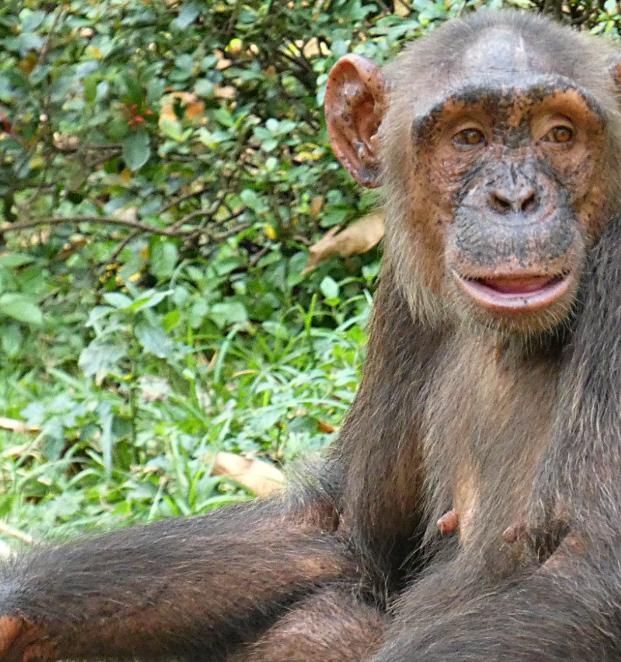
Background: Wild-born, her mother was killed by poachers when she was just weeks old and she was sold as a pet to a Chinese restaurant
Rescued: January 2014 aged nine months
Age today: Ten years
41 LIMBE WILDLIFE CENTRE

AFRICA HAS FOUR SUB-SPECIES:
• CENTRAL ESTIMATED 140,000
• EASTERN AS FEW AS 181,000
• WESTERN AS FEW AS 18,000
• NIGERIA-CAMEROON AS FEW AS 6,000
With your support, Chinoise continues to do well since we last updated you. It is good to see her settled in our mainland group, under the wing of dominant female Papaya. Chinoise is pretty laid back, usually seen relaxing in the shade. Being a young female, she is very popular, and often seen playing with Jo-jo, Jules and Papa.
When she is in a particularly lively mood, Jo-jo is her favourite to play with. Both youngsters, they naturally became good friends with each other since they are both so playful. They wrestle and chase one another around – typical chimp fun. Chinoise has learned from the best, though, and when she needs to stand up for herself she will, just like her assertive adoptive mum Papaya.
Like all our chimpanzees, Chinoise will be happy to see the end of the current dry season. It is very hot for the chimps and Chinoise and the others spend most of their time taking it easy in the shade at this time of year.
Chinoise recently had a health check, as did the rest of her group, and you will be happy to hear she has a great body condition and currently weighs 47kg. Thank you for helping care for this healthy, strong and confident female, who is continuing to flourish after such a troubled start in life.
Laura Praill Fundraising & Communications Manager Limbe Wildlife Centre“I love my job so much and will spend the rest of my life protecting animals. Without wildlife, our country is not economically sound. I will live to fight for these animals to live freely, as they have the right to.”
Jacqueline Ntinyari Twiga* Team Saving Meru’s Giants, Kenya
“They would not survive without the help of humans. Of course, it is my work. But now it is my life! I love them. I worry about them. They are for me like children.”
Ekaterina Pazhetnova Wildlife Biologist Orphan Bear Rescue Centre, Russia
“Adopters’ support allowed the purchase of a solar charging system for rhino security bases. Rangers now have more time to patrol and communication has improved. As Meru’s rhinos increase, our thanks to our adopters for helping rangers keep them safe”

Newton Simiyu Project Manager, Saving Meru’s Giants, Kenya


“I enjoy all my days at the centre! Seeing the cheetahs and all the animals under our care healthy and content, it makes me feel happy so many stolen animals are now in a place of safety enjoying life.”
Bereket Girma
Head of CentreEnsessa Kotteh, Ethiopia
“Thanks to Timtom’s dedicated adopters, she receives round-theclock care as she learns what it takes to be wild. Our expert team provides food, shelter, vet support when required, and perhaps most importantly, a safe forest for her to one day be released into.”
Ashley Leiman Founder, Orangutan Foundation, Borneo



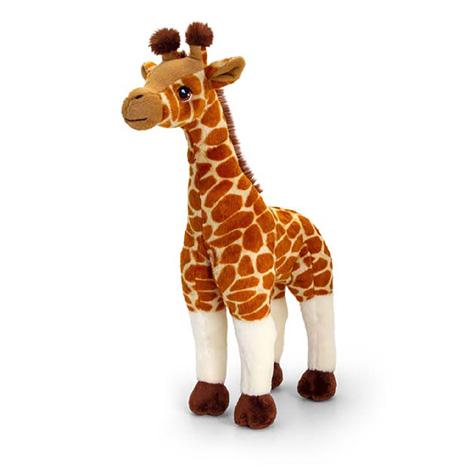





Just take a look at this magazine and choose your favourite animal. As you can see, we have lots of new babies!


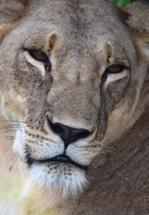

When you adopt, you’ll transform the life of an individual in need or help ensure the survival of an entire species. Adoption is the perfect gift for animal lovers everywhere – show how much you care with the gift that cares. Includes fun and educational personalised gift pack, plus regular updates and optional cuddly toy. Or go green and choose our digital pack. You’ll give even more to the cause, so even more of your adoption goes to the animals.

